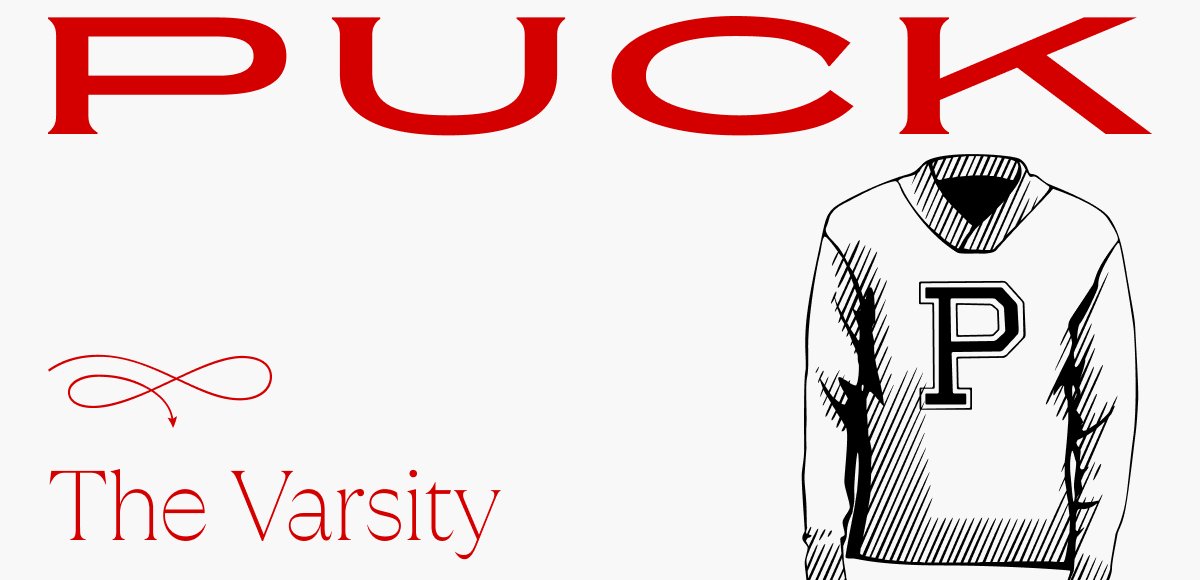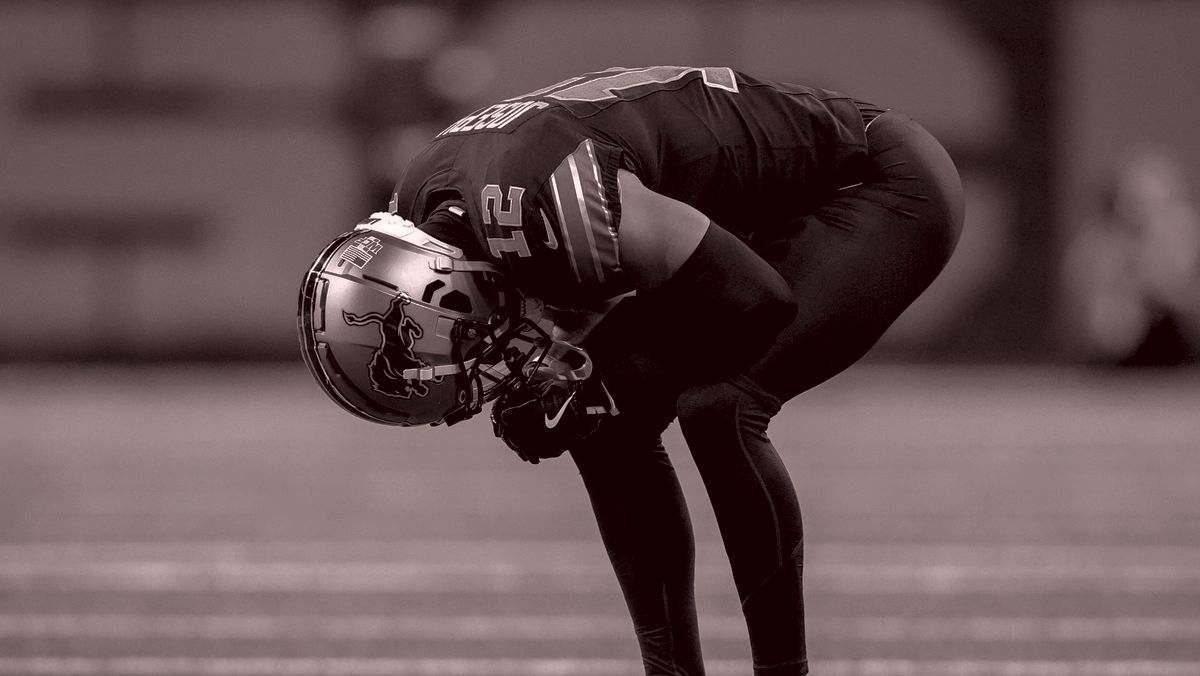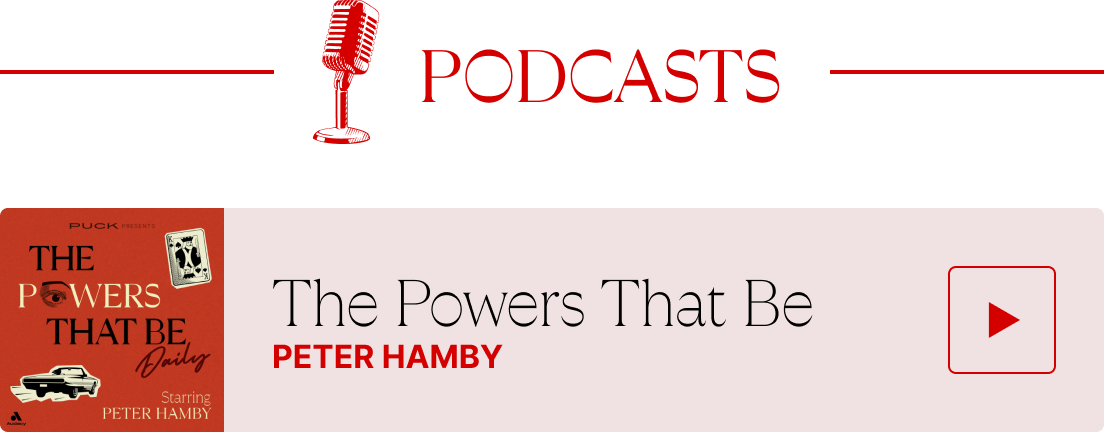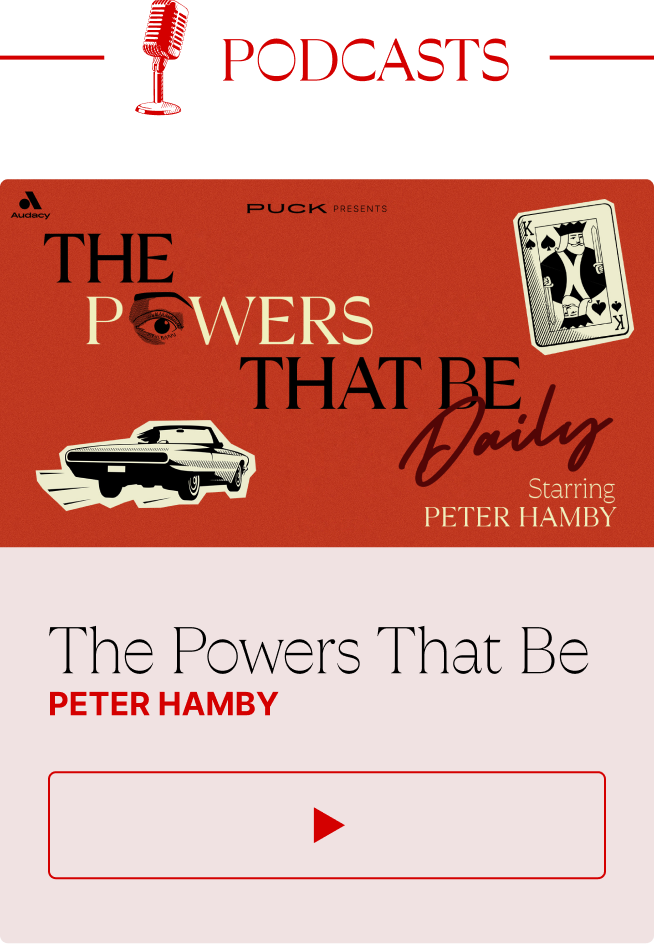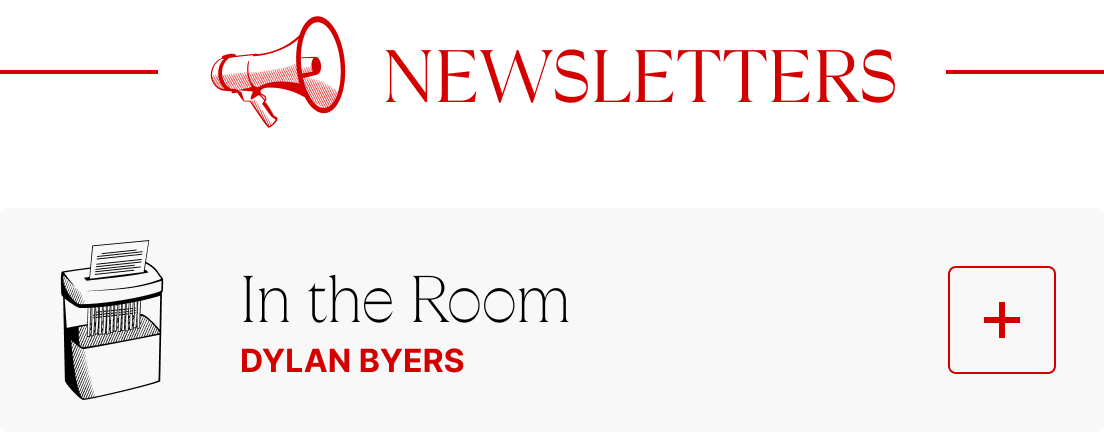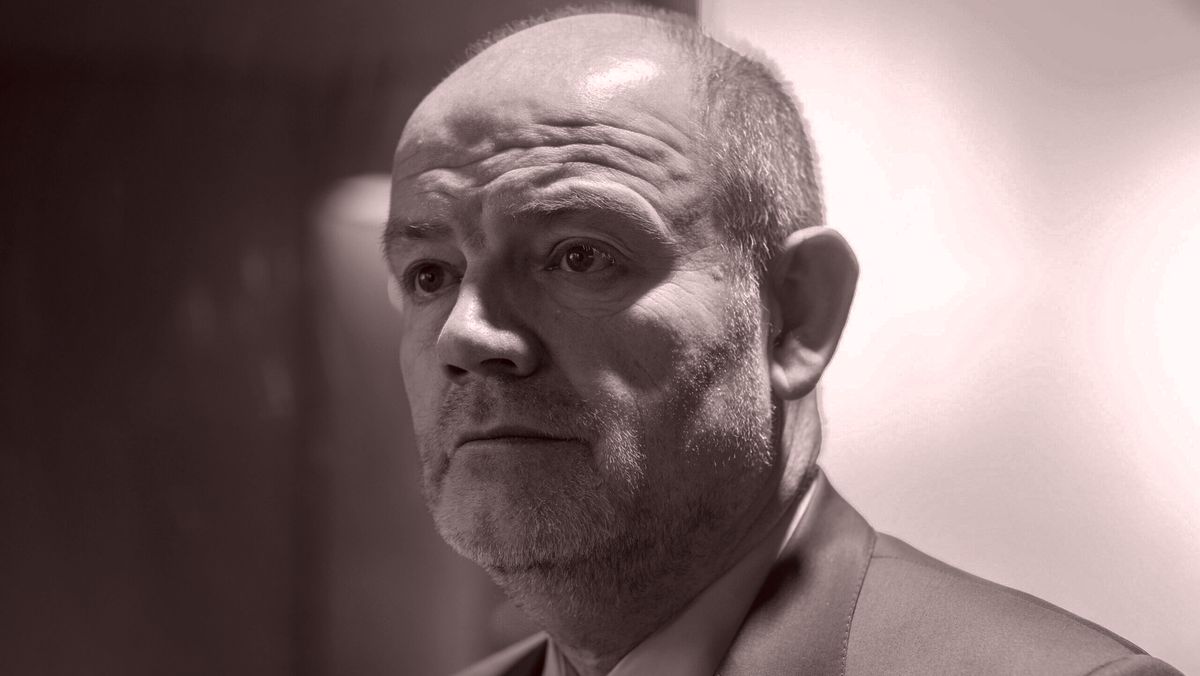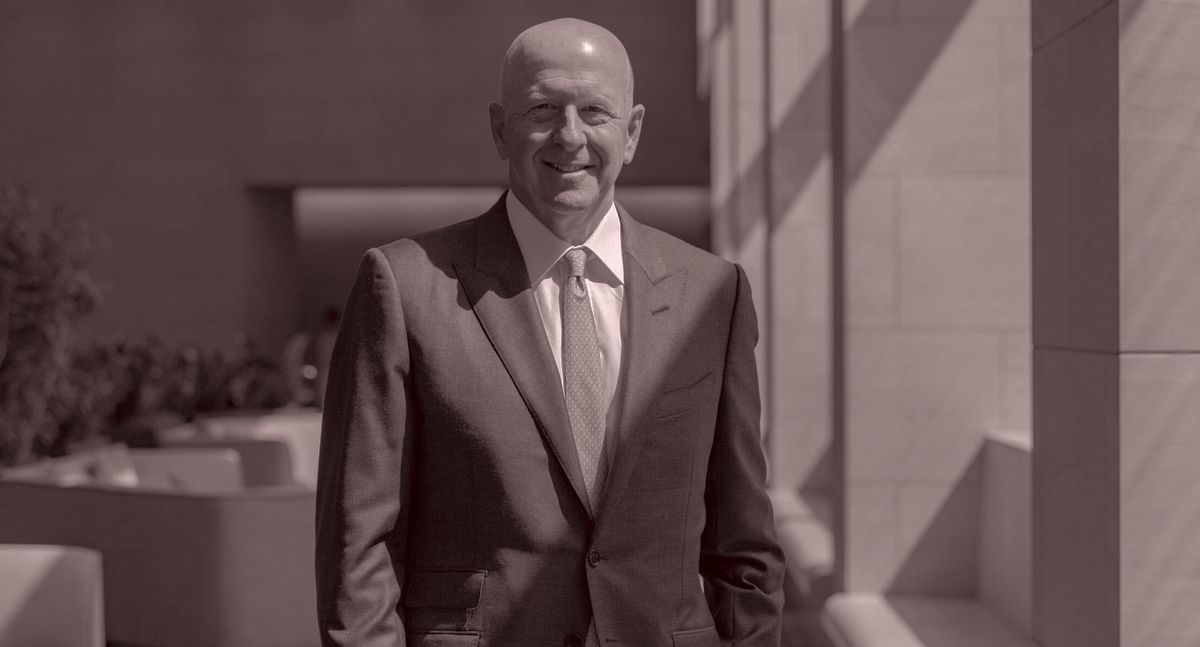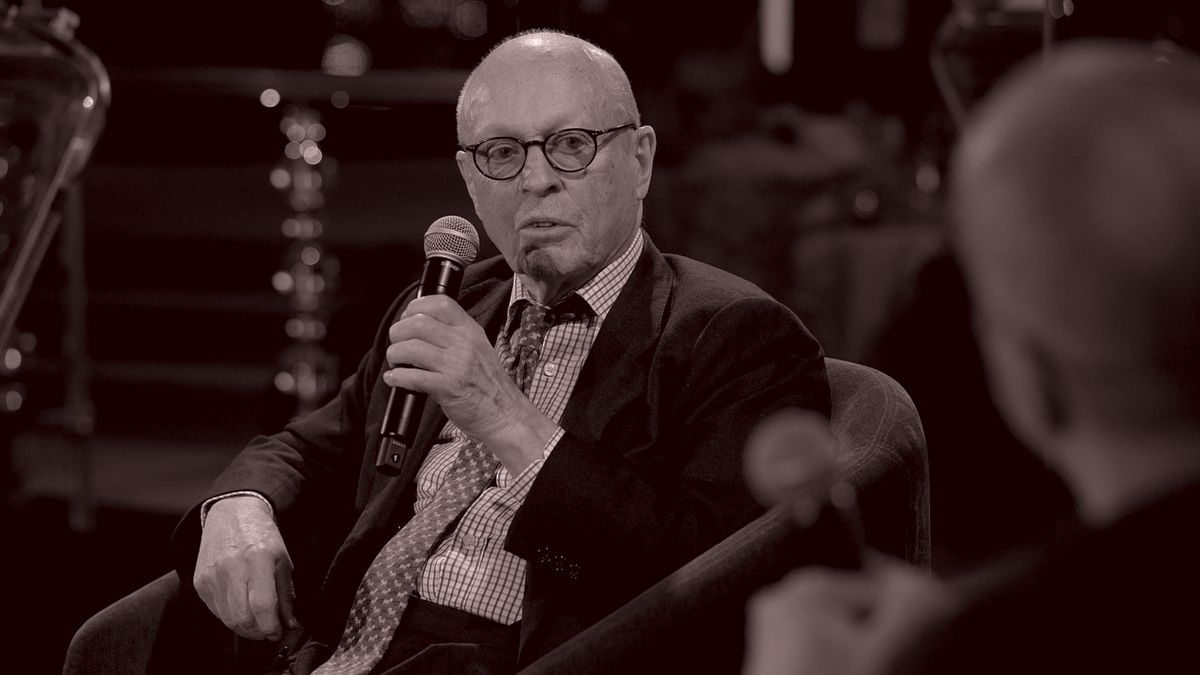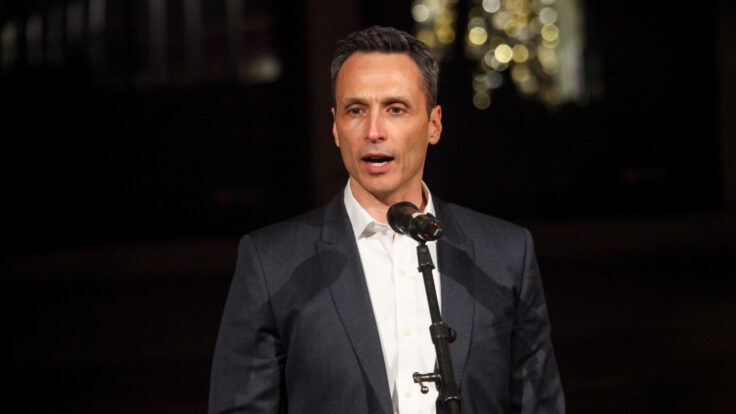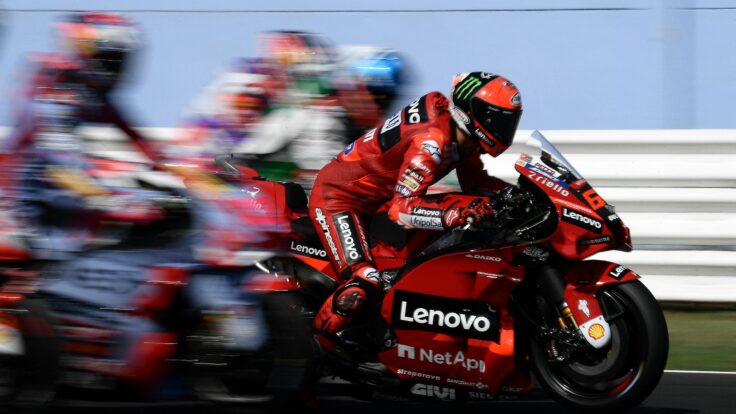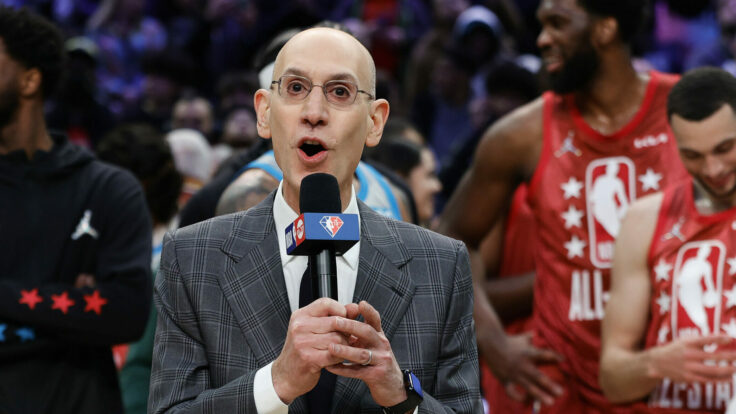Welcome back to The Varsity, my twice-weekly private email on
all the money, power, and egos fueling the sports media cinematic universe. I am coming to you from a frigid Washington, D.C., where the local football club is gearing up to participate in its first NFC championship game in 33 years. If you see Marchand outside Lincoln Financial Field trying to sell tickets, do not engage! Just tell him to put his shirt back on and keep it moving. (Meanwhile, Andrew, where’s my crisp Chablis with one ice cube… Not getting any younger
here.)
🚨🚨 Pod alert: This weekend, MoffettNathanson’s Michael Nathanson joins the Varsity podcast to discuss everything from Netflix’s sports ambitions to Fox’s streaming endgame. Earlier this week, I did a deep dive into the first expanded CFP with NBC Sports’s Nicole
Auerbach.
|
The Brady Meter: NFC Divisional
Round Edition Commanders 45, Lions 31
Grade: B
|
All things considered, Brady had one of his best days yet in the
booth, and he seemed deeply invested in the crucial game. But… nobody’s perfect.
During a mission-critical fourth and two from the 3-yard line, Brady noticed that Detroit had a 12th defender on the field before the Lions’ coaches or bench or even the officials. Instantly grasping that this mental error was going to lead to a Commanders first down, thereby likely nuking the last hopes of forlorn
Lions fans, Brady offered an audible stream of consciousness for the ages. “You need a time-out. Twelve on the field. Time-out. Time-out! Nope. Nope. Oh, no. What are they doing? Time-out!” said the $37.5 million man, as if crying out amid a bout of night terrors.
That line, on some level, encapsulated Brady’s first season in the booth. The GOAT has a Mensa-level football I.Q., and yet he’s so
often unable to convey information to the viewer in a digestible format. To wit: A casual observer would not have even known which team Brady was talking about.
Another fascinating bit of Brady kremlinology took place during crunch time, after an ill-conceived Lions trick play led to a drive-killing interception. Brady’s brief but completely unvarnished disgust over the play call was a tell, at least for some, that
he was second-guessing the acumen of Detroit offensive coordinator Ben Johnson—then a finalist to become head coach of Brady’s Raiders. (No conflict, no interest, as the lawyer Allen Grubman allegedly used to say…) It would come out later that Brady had spent hours on a Zoom trying to convince Johnson to come to Las Vegas. Alas, he’s off
to Chicago.
|
Player of the Week: Victor Wembanyama
|
A week after we learned that LeBron wingman
Maverick Carter was trying to raise $5 billion in fresh capital to start an international basketball league, Wemby’s Spurs returned to his hometown of Paris for two regular season games against the Pacers. Unsurprisingly, given his success in the French professional league, tickets sold out within hours, and local fans were treated to a 30-point, 10-rebound Wemby stat line in the Spurs’ 30-point win this afternoon. (The other Paris game will
take place on Saturday.)
The NBA has expanded its global footprint considerably over the past decade, largely by leaning on major stars from major international markets, such as Yao Ming, who transformed the sport in the People’s Republic, and to a lesser extent Dirk Nowitzki. And amid an era so rich with foreign talent—Luka, Joker, Giannis, etcetera—it’s increasingly
clear that the league sees the 7-foot-4, 21-year-old French superstar as key to its future growth, especially as it contemplates investing in a European league of its own. This morning, The New York Times posted a story declaring Wembanyama the future face of the league, as LeBron and Steph and
K.D. age out. These Paris games mark a good start.
|
Down to the J.V.: Lloyd Howell Jr.
|
The executive director of the NFL Players Association finds himself
in an uncomfortable spot. As my former colleague Ben Fischer recently reported, the NFLPA has offered buyouts to half of its 150 employees, sparking rumors of layoffs if not enough staffers bite. Given the NFL’s historic financial success over the past few years, including $110 billion in media
rights deals, how could the Players Association be in a financial jam? Per Fischer: “One cause … was the arbitration ruling last August in which the union was ordered to pay [the collectibles company] Panini $7.8 million for wrongfully terminating its contract.” Alas, there would need to be millions of other reasons, too. I’ll stay on the case.
Okay, on to the news…
|
- Tackling the Sunday Ticket appeal: As Varsity readers know, last August, Judge Philip Gutierrez
overturned a jury verdict awarding $4.7 billion to NFL Sunday Ticket customers in a class-action antitrust case, saying the jury’s conclusion that NFL owners had conspired to fix prices for their out-of-market package was unfounded. Now, as my Puck partner Eriq Gardner reported in
his always excellent What I’m Hearing+ private email, “The class-action lawyers resubmitted their initial appellate brief—still under seal—a week ago and added an alternative damages calculation under a different formula.” What makes this especially interesting is that, in one of the last acts of his administration, Biden’s Justice Department sided with the plaintiffs, stating that “the NFL’s illegal acts are continuing.”
You might think this won’t
amount to anything, given the changes in the White House. But Eriq argued otherwise, noting, “The 9th Circuit, which previously revived the Sunday Ticket case after a dismissal, is one of the more liberal appellate courts. That said, all bets are off if the case ascends to the Supreme Court. Justice Brett Kavanaugh has signaled a willingness to consider the NFL’s position that its TV licensing arrangement constitutes a totally legitimate joint venture.”
- The Netflix era: The streaming service has been in the news lately after announcing it added 41 million new subscribers last year, twice as many as in 2023. On CNBC, LightShed’s Rich Greenfield called Netflix’s performance “stunning.” My takeaway for the overall sports business is not as bullish, however. It’s true that the Mike Tyson–Jake Paul fight and NFL games were responsible for bringing in a lot of new
subscribers. But, as MoffettNathanson’s Robert Fishman wrote in a recent note, “those drove only a small piece of the upside to investor expectations as the growth across all regions showed broad-based strength from the core content offering.” During his CNBC appearance, Greenfield acknowledged, “It wasn’t like any one [event] was the overwhelming driver of that many subs.” Indeed, to the chagrin of many reading this email, the streamer’s sports strategy is not yet fully
formed.
- Baseball’s coming salary cap: The reigning champion Los Angeles Dodgers, already stocked with talent, have spent the offseason signing top-tier free agents and pushing their payroll to $375 million for next season. Other big-market teams, including the Phillies and Yankees, will also have payrolls that eclipse $300 million.
What does this mean for a mid-market team, like my Orioles, which has a projected payroll of around $150
million? David Rubenstein, the team’s new owner, told Yahoo Finance this week that he expects the league to institute some sort of salary cap in the future. “What we have is a luxury tax, in effect,” he said from Davos. “If you go over with a higher payroll, you have to pay a penalty that goes to other teams. It’s not a perfect system. It’s better than nothing. At some
point, I suspect, we’ll have something close to what the NFL and NBA have. But there’s no guarantee of that.”
Rubenstein admitted that “big-city teams have some advantage,” but he cautioned that payrolls do not guarantee championships. As far as the O’s go, he said, “We have a payroll that is consistent to our needs. I don’t think anyone is not playing with the Orioles because of money reasons.”
- CFP deep dive: While most media executives viewed
the expanded College Football Playoff as a success, they also expect that the committee will make some revisions. In my conversations, most gripes centered on the lack of enough on-campus games and a seeding strategy that undermined conference champions, like Oregon and Georgia, who were rewarded with difficult matchups.
But don’t expect any changes next season, NBC Sports college football insider Nicole Auerbach
told the Varsity podcast this week. Next year, schedule changes would have to be approved by a unanimous vote. More substantive changes could come in 2026, Auerbach said, when the threshold for approval is lowered.
Meanwhile, there will inevitably be a beef between the Big Ten and SEC, the top two conferences, and
everyone else. After all, the ACC and Big 12 think their champions should be rewarded with a bye week and a top seed—not simply because they don’t want the seeding stacked with third-place finishers from larger conferences, but also on account of the financial implications. “It’s hard to imagine the ACC, Big 12, Mountain West, and AAC agreeing to give up their path to a first-round bye unless concessions are made,” she said. “Part of the reason you want that first-round bye is because
you get the payouts for two rounds—your team advancing twice. That’s millions of dollars, and that’s really important to these conferences.”
She continued: “Could you just pay it out and then change the seeding, so that it’s true to the rankings? … I do think there’s a way to do that, but it’s just hard to imagine with this group of commissioners. … It’s really hard to get unanimity in college sports. Everyone is looking out for their own interests. … But for 2026, everything changes. The
governance model is different. The Big Ten and the SEC can throw around their weight and make changes—not quite unilaterally—but close enough that we can talk about it that way.”
- The new Spulu: Venu is gone, but its business plan will not be forgotten. Last week, DirecTV launched a skinny sports bundle of 40 sports and broadcast channels for $70. Today, Comcast followed suit by putting its marketing power behind a package of more than 50 news and
sports channels, plus Peacock, for $70. Interestingly, Comcast’s sports package includes channels from ESPN, Fox, CBS, and NBC. Notably, it does not include any channels from Warner Bros. Discovery, which holds the rights to the MLB and NHL playoffs, plus March Madness, though I’m told that could change.
Distributors like DirecTV and Comcast insist that they can slow cord-cutting if they are allowed to offer skinny bundles like these. A year from now, we’ll have a good handle on
whether this strategy is working.
|
|
|
Ratings for NFL playoff games are down close to double digits so
far this season, a surprising reality that has spawned all manner of business philosophizing—some of it banal, some of it quite sage.
|
|
|
A funny thing has happened amid the National Football League’s
manifest destiny to rule over the remains of linear and the future of streaming. Some 90 percent of the most-watched shows on broadcast every year are NFL games. But, strangely, ratings for the NFL playoffs are down close to double digits so far this season.
Two weeks ago, the six wild card weekend playoff games were down more than 9 percent across Amazon, CBS, ESPN, Fox, and NBC. Last week, the four
NFL divisional playoff games were down 7 percent. These drops follow a regular season that was down 2 percent. (In fairness, the league’s numbers are often softest during national election cycles.)
Of course, the league and network executives I’ve talked to aren’t exactly sweating the numbers—at least not yet. After all, this year’s playoffs featured a disproportionate number of smaller-market franchises (Tampa, Detroit) and the absence of
blue chip clubs (Dallas, San Francisco) or ratings-juicing New York teams. (Inside the league office, many recognize that the Jets’ and Giants’ disastrous seasons played a role in the ratings dip.) And then there was the inaugural 12-team CFP, which competed with the NFL a couple of times. The divisional playoff round was also scheduled on a holiday weekend just before a presidential inauguration.
Nevertheless, those wild card games still
averaged 28.3 million viewers, a larger audience than just about anything else on television. The divisional round may have dropped 7 percent, sure, but those games still averaged 37.1 million viewers. “What this league has been doing, relative to the rest of the business, is off the charts. So let’s not overreact,” one media executive told me. “But if we do start to see some longer-term trends over the next few years, there are some factors that should get a second look.”
Indeed, there are systemic issues that bear watching—specifically, at least according to my sources, football fatigue. In its race toward zeitgeist ubiquity, the league has spread its schedule so widely that at least one game was played this season on every day of the week except Tuesday—including a September Packers-Eagles game on a Friday night and the Ravens-Texan and Chiefs-Steelers games on
Christmas Day, which fell on a Wednesday this year.
Naturally, there is a fear that this sort of excessive scheduling turns these games into commodities. But from the NFL’s standpoint, alas, the easiest way to generate more rights fee revenue is to schedule in even more windows. And the easiest way to create more windows is to extend the season, which is something that Roger Goodell has discussed publicly.
Executives are also monitoring the recently expanded playoffs, which now feature seven teams per conference rather than six. Of course, from a rights fee perspective, it made sense for the league to expand the playoffs. Amazon paid about $150 million for the rights to one wild card playoff game this season, a 36 percent increase over the $110 million NBC paid to put a wild card playoff game on Peacock last year. But the competition has inevitably suffered.
This year, five of the six wild card games were blowouts—only the Commanders’ last-second win in Tampa was competitive, and viewership for that contest was down double digits compared to the Lions’ nail-biter of a win over the Rams last season. It was the same story last year, when, again, five of the six wild card games were lopsided.
One last factor to consider: While the NFL loves to tout its boffo ratings, it’s
also become increasingly tantalized by the financial opportunities afforded by the cash-flush streaming players. And yet, for all their money and subscribers, neither Netflix nor Amazon (and certainly not Peacock) will be able to compete with traditional broadcast networks on total viewership. As the league continues to put more games on O.T.T. services, its viewership numbers will feel the impact. “None of these reasons is massive, but they are all fair to use when explaining why the league’s
playoff numbers are down,” one executive said.
|
On Matt Bond’s retirement: “A brilliant mind, great guy and literally indestructible.
Sure, some of the deals were tough to knock out, but you had to respect his vision—he knew how to read the room and the industry for the long haul. Well done, my frenemy.” —A cable guy
On Nicole Auerbach’s appearance on the pod: “I love her idea of trading cash incentives for seeding adjustments. Extrapolating on her idea, I think there’s a deal to be made whereby conference champions earn no less than $8 million dollars in CFP money and are seeded no lower than eighth,
guaranteeing them a home game in the first round. The third- or fourth-place teams from the Big Ten and SEC hardly deserve a home game, especially if they don’t play in a conference championship game. (Yes, I’m talking about you, Ohio State…) However, I disagree that we need to get rid of the conference championship games; we just need to protect their importance and incentives.” —A Varsity subscriber
On my colorful description of
Greg Norman’s rep: “A ‘pariah’ and a ‘thirsty luddite’? Remind me never to piss you off.” —A sports business executive
On the rebirth of Langan’s: “How about a little love for the Long Acre Tavern down the street? It not only has a world-famous minority owner 😎 but we’re actually 50 feet closer to 1211 (Fox) and 30 Rock (NBC)! And Sir Rod Stewart has his own corner table so he can watch Celtic F.C.” —A
sports business executive and minority owner of Long Acre Tavern (in case that wasn’t obvious)
On Marchand’s dog-walking: “The person who complained that your Marchand jokes are getting old doesn’t know what he is talking about! Keep them coming!” —A media executive and Marchand completist
|
Have a great weekend,
John
|
|
|
Join Emmy Award-winning journalist Peter Hamby, along with the team of expert journalists at Puck, as they let
you in on the conversations insiders are having across the four corners of power in America: Wall Street, Washington, Silicon Valley, and Hollywood. Presented in partnership with Audacy, new episodes publish daily, Monday through Friday.
|
|
|
Ace media reporter Dylan Byers brings readers into the C-suite as he chronicles the biggest stories in the
industry: the future of cable news in the streaming era, the transformation of legacy publishers, the tech giants remaking the market, and all the egos involved.
|
|
|
Need help? Review our FAQ page or contact us for assistance. For brand partnerships, email ads@puck.news.
You received this email because you signed up to receive emails from Puck, or as part of your Puck account associated with . To stop receiving this newsletter and/or manage all your email preferences, click
here.
|
Puck is published by Heat Media LLC. 107 Greenwich St, New York, NY 10006
|
|
|
|
